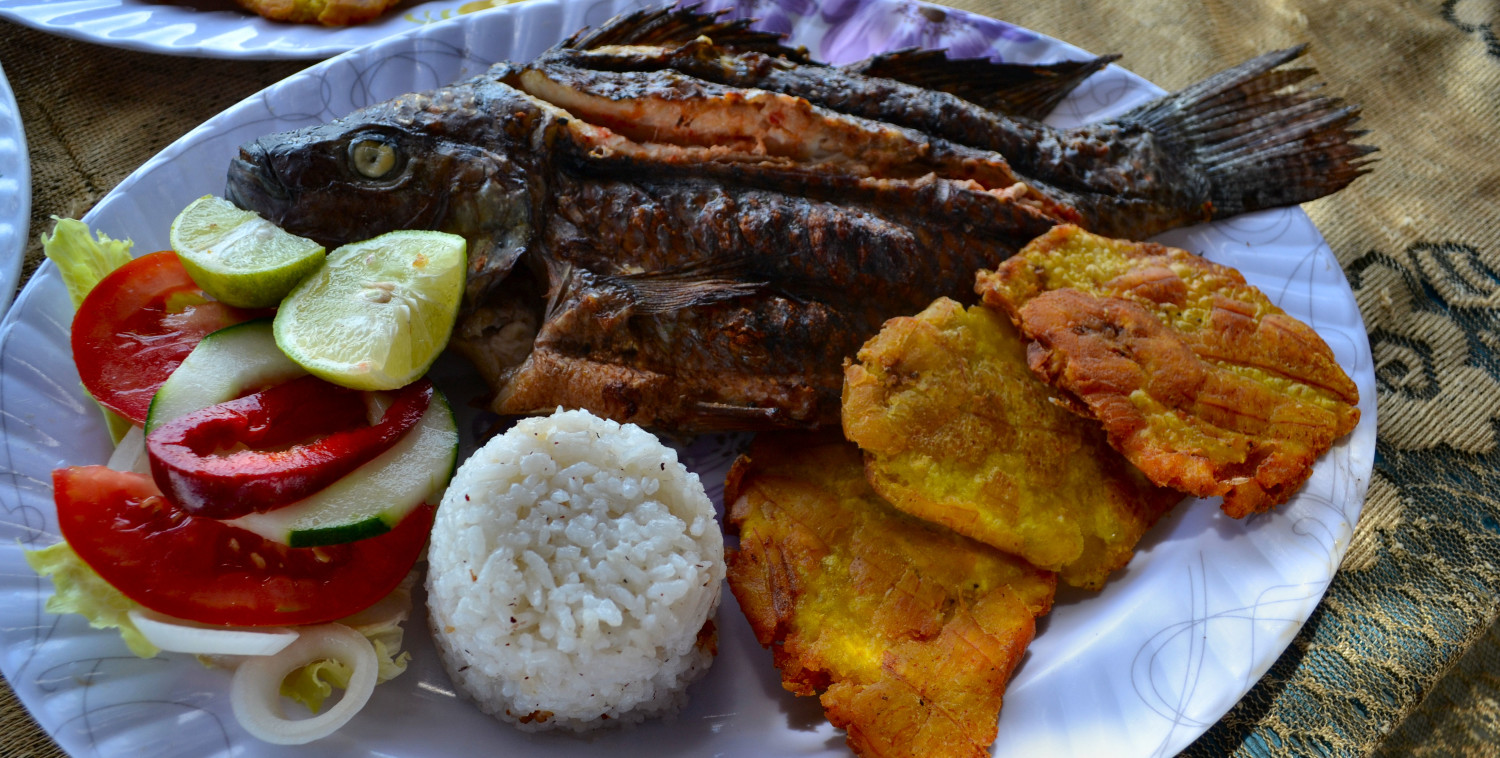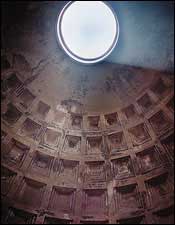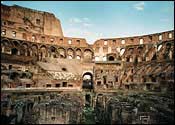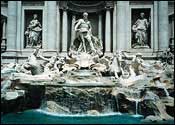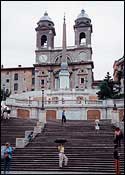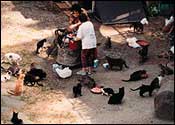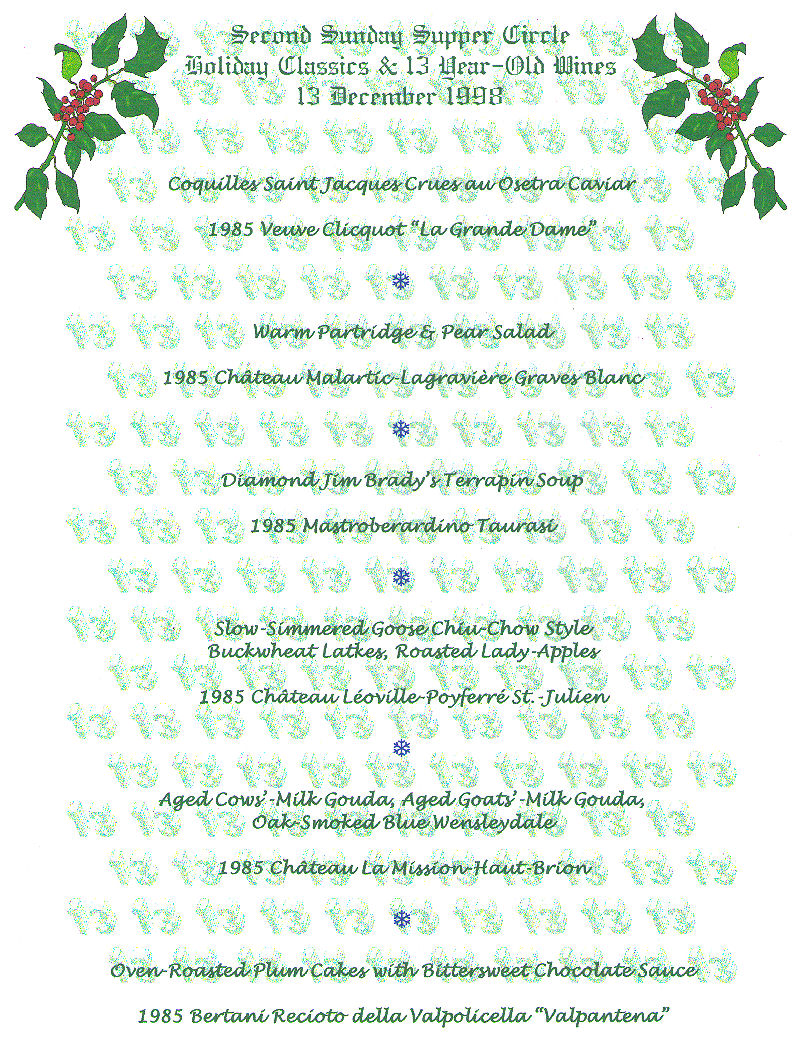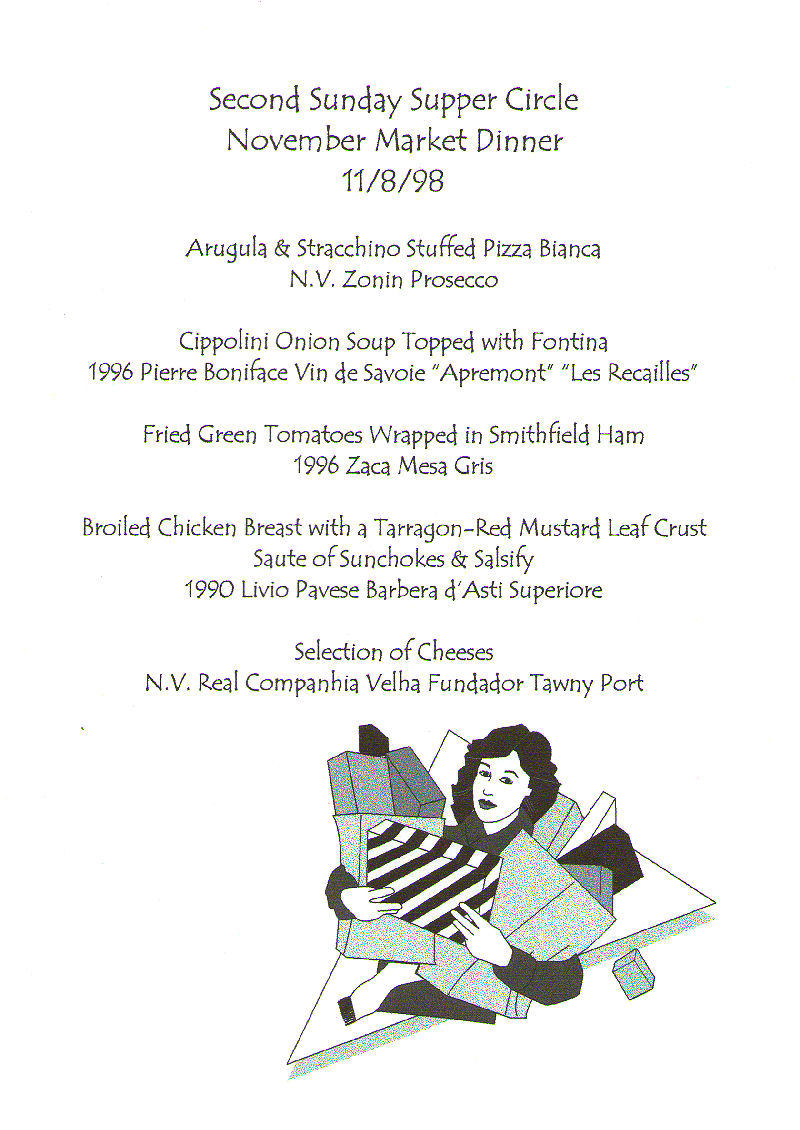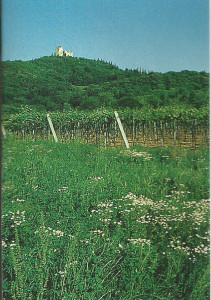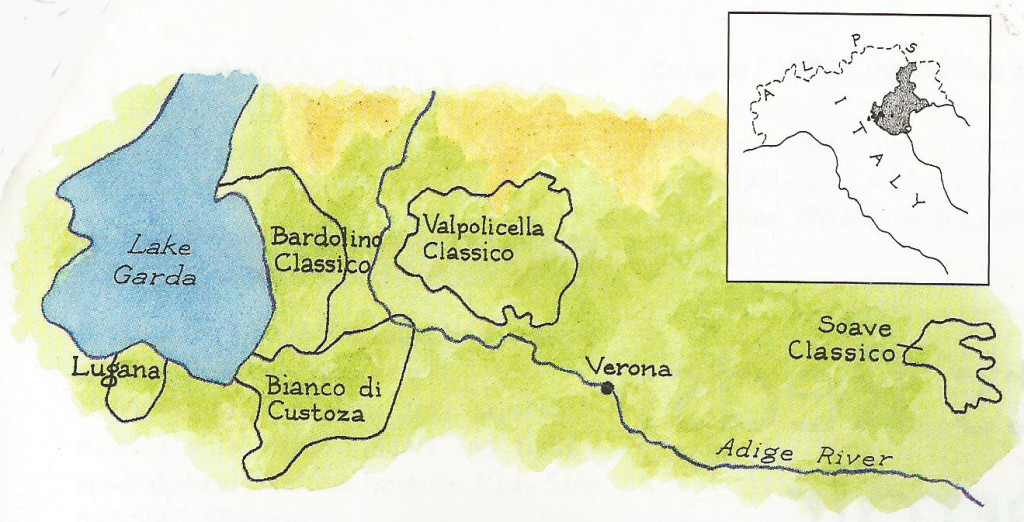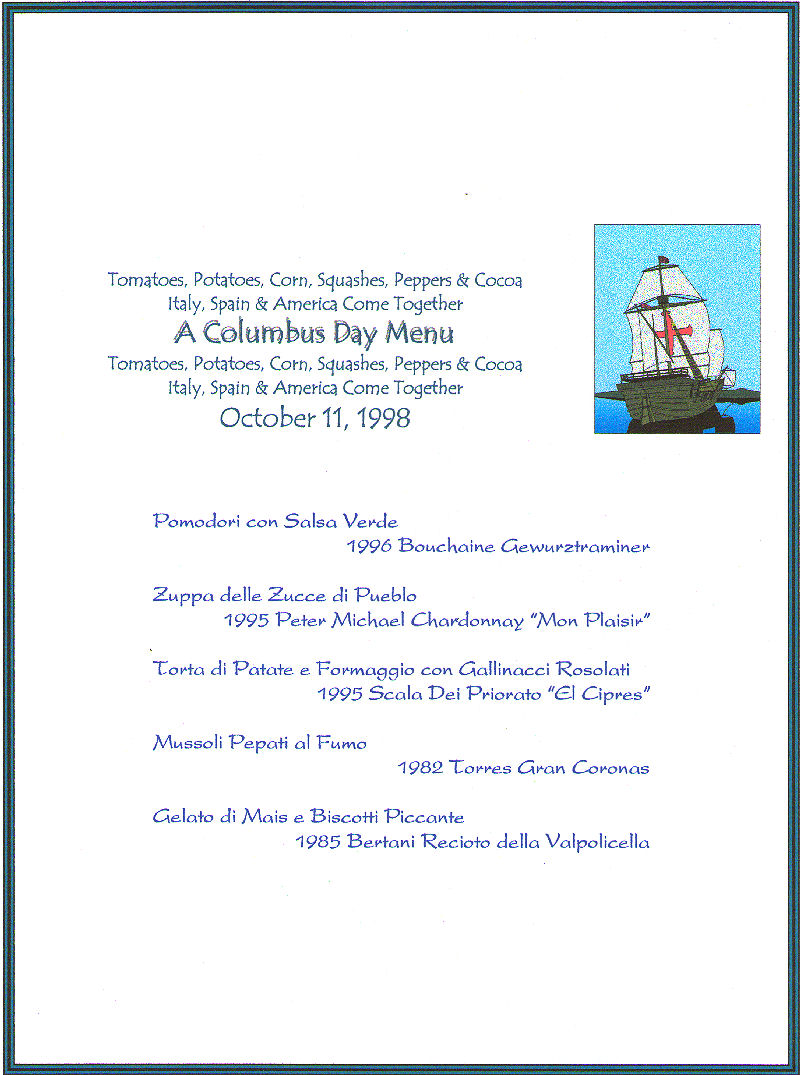Santé
The Magazine for Restaurant Professionals
Winter 1998
Pages 30-31, 60-63
Chile’s Hot Values
Let’s face it. We never though that we’d be drinking Chilean Merlot. In truth, most of us never thought about Chilean wine at all. It was partially the source; except for those geography nerds who sat in the front row, who knew where Chile was anyway? We were sure, if someone had asked, that it was somewhere in South America, and it was probably a perfectly nice place to live if you were South American, but wine? I mean, even the name, Chile, comes from the Indian word Tchili, the “deepest point on earth.” Who would grow grapes there?
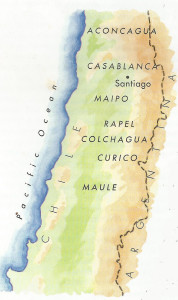 It was also the grape – Merlot. A few years ago, Merlot was a wine that mostly was left to people who hadn’t quite figured out if they liked red wine or not. Sure, we drank it when it was blended with Cabernet in Bordeaux. (But we didn’t think about that.) Now and then we even poured it as house wine. Then someone decided they had a lot of the stuff to sell. Amazing what a good publicist can do for a disregarded grape, no?
It was also the grape – Merlot. A few years ago, Merlot was a wine that mostly was left to people who hadn’t quite figured out if they liked red wine or not. Sure, we drank it when it was blended with Cabernet in Bordeaux. (But we didn’t think about that.) Now and then we even poured it as house wine. Then someone decided they had a lot of the stuff to sell. Amazing what a good publicist can do for a disregarded grape, no?
Now the “M” grape is everywhere. The trend of the moment is to rip up whatever grapes you have and plant it, and nowhere is this more apparent than in Chile. In the last ten years, Merlot has taken to the Andean foothills and valleys like no other grape before it. Winemakers from the world over have flocked to the South American continent to lend their expertise, stake their claim and generally just get some grapes in a bottle.
Geography and Climate
Not that I want to bring up geography again, but it will help to put Chile in perspective. For those who don’t remember from class or who haven’t run for their dusty atlas, Chile is located on the “left-hand” side of the tail of South America. It stretches an amazing 2,610 miles from north to south, while averaging only 110 miles wide from seashore to the top of the Andes, and remember, that long stretch is north to south, making for wide climate differences.
In addition, the altitude ranges from sea level on the shores of the Pacific to over 22,000 feet at hte top of the Andes. Soils vary from sea-sand to volcanic rock; as a matter of fact, two of the areas where grapes are grown, Tupungatu and Maipu, are volcanoes. With desert in the north of the country and mountains, fjords and forests in the south, the grape growing region is centered around the central and capital city, Santiago. This is where 70 percent of the population live, and it is also where the climate is most conducive to grape-growing. Here, the summer temperatures average in the low 70s, while the winters are moderate, with mid-40 mean temperatures. The rainfall is around 15 inches per year, almost entirely during their winter, from May to September. What more could a grape ask for?
What is a Chilean Merlot?
General Characteristics and Aging: While it’s hard to generalize, Chilean Merlots fall into two styles: young, fresh wines, with bright berries that are made for casual drinking upon release, and rich, plummy, almost chocolaty wines, with solid oak contact that are made for developing over three-to-five years and that go well with grilled or roasted red meats. The latter are often designated as reserva wines.
Recent Vintages: Because of the consistent climate and the reliance on technological winemaking, Vintage is an insignificant factor in Chilean wines at this time. Having tasted several vintages of some of the more popular wines, house style remains notedly consistent from year to year.
Identity Search
While Chileans have made wine for centuries, the Chilean wine industry is “born-again.” Old styles of overripe, cooked fruit and native wood barrels that produced wines that only the Chileans loved have disappeared in a wave of modern technique and technology. Stainless steel, imported oak and laboratory analysis are now de rigueur rather than the exception. Natural pluses, such as no phylloxera, just add to the temptation to grow grapes and to make wine.
It would be nice to say that there is a definitive style for the wines of the valleys of Rapel, Aconcagua, Colchagua, Lontue, Curico, Central, San Fernando, Casablanca, Peumo, Maipo and Maule, or for that matter, to say that there is a definitive style for the Merlots of Chile, but there is not. Instead, hype about the “fun and flavor,” the “Latin American personality”and the “exuberance and fruit”of these wines dominates any discussion. In some cases, one or the other of these descriptors even holds true.
In fact, the quality and style of Chilean Merlot ranges from thin and weedy to overextracted and tasting of two-by-fours, but at the same time, it can range from ripe, fresh, berry fruit quaffs to rich, full-bodied, dark fruit, age worthy entries. This isn’t all that surprising given that the price range of these wines starts around $30 a case and goes up to five times that. What is surprising, however, is that in many cases, the low-end wines outshine the high-end choices.
As the saying goes, not all that glitters is gold, and in this case, not all of it is Merlot. Research done by the Chileans and others has shown that much of what is planted in fields of Chile is actually Carmenére or Grande Vidure. Although these grape varieties constitute a large percentage of plantings, bottle labeling almost excluisvely states “Merlot.” This accounts for a good amount of the differing palate profiles.
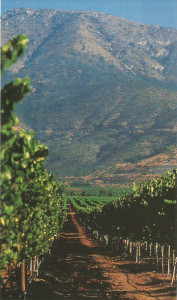
Veramonte Vineyards, Casablanca Valley, Chile
Similar to California, there is little in Chile in the way of vintage variation. The climate is steady from year to year – heat, sunshine and long growing seasons. Fresh, well-extracted fruit with a bit of oak put these wines squarely in the international style, and for the most part, the Chilean wines are made for early consumption. On the other hand, there are those who see the potential for treating each vintage differently by making reserve wines for aging when appropriate. Unfortunately for the consumer, the reserve designation is no guarantee of this style or level of quality. Caveat emptor.
Perhaps the most definitive thing I can say about the Merlots (and perhaps all varietals) of Chile is that the winemaker is the important factor. While there are soil differences between appellations, there is no notable terroir difference in the wines. Likewise, there is little that distinguishes Chilean Merlot from that of other countries, but a distinctive, fairly consistent house style emerges within each winemaker’s products.
The Price is Right
As a value house quaff, Chilean Merlots are certainly up there near the top. It’s hard to find decent red wine at these prices. The demand for Merlot from all points has, strangely enough for the world of competition, not driven prices down, but driven them up. The value wines that I recommend here are ones that I would certainly be happy to see poured at a bar or as a house wine at a table. For the higher-priced entries, what we have now is aging potential. The future remains to be seen, but certainly for short-term aging, these wines appear to be great choices for not a lot of money.
Reviewer’s Choice
Caliterra / 1997 Valle Central
100% Merlot
An absolutely delightful entry, this wine has what I look for in a quality Merlot. Dark, ripe fruit, peppery, a touch of cedar, an overlay of bitter chocolate, good acidity and alcohol. Unbeatable for the price, and a great partner with grilled meats.
Concha y Toro / 1994 Rapel Valley / Marqués de Casa Concha
100% Merlot
This elegant entry has notes of cocoa, tobacco, pepper, ripe dark cherries and an intense, long finish. It opened up beautifully with time. Try this with a solid red meat meal. The outstanding wine of the tasting, not just in the value category.
Cousiño-Macul / 1995 Maipo Valley
100% Merlot
Entry has dark cherry fruit, bitter chocolate, pepper and herbal qualities. A long finish, good tannins and alcohol show a definite promise for aging. This is a great choice any time you want a solid, full-bodied red with dinner.
VALUE
Alameda / 1995 Maipo Valley / Santa Maria Vineyard
100% Merlot
Light and simple, this makes a nice house pour. Bright berry fruit, with good acidity and just a touch of tannin and oak on the finish. [Alameda Wine Cellars, 518-756-7015, $52/case]
Alameda / 195 Maule Valley / Special Reserve, La Violeta Vineyard
100% Merlot
Ripe cherries and cinnamon are prominent in this nicely balanced entry. The small dose of oak and tannin on the finish round this out well. Serve with lighter meat dishes, such as veal and poultry. [Alameda Wine Cellars, 518-756-7015, $68/case]
Caliterra / 1997 Valle Central
100% Merlot
An absolutely delightful entry, this wine has what I look for in a quality Merlot. Dark, ripe fruit, peppery, a touch of cedar, an overlay of bitter chocolate, good acidity and alcohol. Unbeatable for the price, and a great partner with grilled meats. [Robert Mondavi Winery, 707-226-1395, $68/case]
Carta Vieja Merlot / 1997 Maule Valley
100% Merlot
Ripe fruit, herbs, pepper, a good touch of oak and a slightly off-dry palate make this a perfectly acceptable house quaff. Given the price, this is an outstanding value. [Frederick Wildman & Sons, 212-355-0700, $34/case]
Casa Julia / 1995 San Fernando Valley
100% Merlot
A light style with nice acidity, bright berry fruit and a touch of tannin and oak on the finish. Better than the typical house pour, this is a good choice with lighter dishes. [T. Edward Wines, Ltd., 212-233-1504, $72/case]
Casa Lapostolle / 1996 Rapel Valley
100% Merlot
Fresh, sweet cherry fruit, with a touch of cinnamon and a nice round finish. A bit of tannin and good acidity make this quite tasty. Try it with pasta or risotto. [Schieffelin & Somerset, 212-251-8200, $96/case]
Chateau La Joya / 1996 Colchagua Valley
100% Merlot
Vegetal and herbal, this wine seems as if it is made from underripe grapes, yet it is rather pleasant and certainly a nice choice for those who want a “non-fruity” option. [Marie Brizard Wines and Spirits, USA, 305-893-3394, $56/case]
Chateau La Joya / 1995 Colchagua Valley / Gran Reserva
100% Merlot
Somewhat herbal, though far more complex than the non-reserva, with spicy notes, a slightly bitter finish and a bit more plummy fruit. With roasted poultry, this makes a nice partner. [Marie Brizard Wines and Spirits, USA, 305-893-3394, $96/case]
Concha y Toro / 1996 Peumo Valley / Trio
100% Merlot
Ripe, bright fruit with a touch of pepperiness, a good dose of alcohol and a long finish. This wine has an unusual petrolly note that is unexpected, but not unpleasant in a Merlot. Try it with a lighter meal. [Banfi Vintners, 516-626-9200, $76/case]
Concha y Toro / 1994 Rapel Valley / Marqués de Casa Concha
100% Merlot
This elegant entry has notes of cocoa, tobacco, pepper, ripe dark cherries and an intense, long finish. It opened up beautifully with time. Try this with a solid red meat meal. The outstanding wine of the tasting, not just in the value category. [Banfi Vintners, 516-626-9200, $96/case]
De Martino / 1996 Maipo Valley
85% Merlot, 15% Cabernet Sauvignon
Light berry fruit, simple and smooth, an interesting note of soap or perhaps cilantro, which also appears in this producer’s reserve wine. Nice with spicier Asian cuisines. [O.F.S. Imports, 707-526-9111, $78/case]
La Playa / 1994 Maipo Valley / Estate Reserve
100% Merlot
Chocolate and sweet, ripe plums dominate the nose and palate here. Good acidity, sweet oak and mild tannins flesh out the package and make this a delight to drink. One of my favorites in this tasting, this is perfect with lighter meals. [La Playa Vineyards, 516-868-3363, $88/case]
Montes / 1996 Curico Valley / Special Cuvée
100% Merlot
This wine is potentially age worthy, with a good concentration of ripe fruit, nice touches of oak and a good long finish. A great “casual dinner” wine. For those to whom it matters, this was my favorite packaging as well. [T.G.I.C. Importers, Inc., 818-769-1821, $80/case]
MontGras / 1996 Colchagua Valley
90% Merlot, 10% Cabernet Sauvignon
Spicy, peppery and a nice concentration of ripe, red fruit. A good dose of alcohol and tannin give it some nice backbone as well. This one might even age for a bit. A tasty accompaniment to lighter meats. [The Hess Collection, 707-255-1144, $65/case]
Saint Morillon / 1995 Lontue Valley
100% Merlot
Bright, delightful, ripe berry fruit and light in style, with just a touch of a spritz and a little shoe polish on the finish make this a tasty house pour. [Billington Distributors, 703-541-0115, $48/case]
Santa Ema / 1995 Maipo Valley / Reserve
100% Merlot
Definitely a wine for those who like oak, this wine has an intense oak, butter, vanilla and coconut nose, with ripe berry fruit underneath. A good barbecue wine. [T.G.I.C. Importers, Inc., 818-769-1821, $84/case]
Santa Rita / 1996 Lontue Valley / 120
100% Merlot
In some wines I like a “barnyard”nose but young Chilean Merlot may not be the best place for it. Still, for those who want the funk, this is the only option I found in the genre. [Vineyard Brands Inc., 205-980-8802, $65/case]
Santa Rita / 1995 Maipo Valley / Reserva
100% Merlot
With just a touch of that earthy, barnyard funk, this wine is far more interesting than its non-reserva counterpart. Great spicy finish, lots of ripe cherry fruit and a structure that says it will age well. [Vineyard Brands Inc., 205-980-8802, $90/case]
Stony Hollow / 1996 Aconcagua Valley
100% Merlot
Dried cherries, light spice and a touch of minerals. A nice, rounded package that works well with lighter meals and a good choice for a bar pour. [Joseph Victori Wines, Inc., 914-637-0100, $59/case]
Terra Nova / 1994 Maipo Valley
100% Merlot
Ripe plums and apricots, with a touch of cocoa and cedar. Good acidity and tannins show promise for some development with time. This one works well with lighter meals, such as poultry and pasta. [Freixenet, USA, Inc., 707-996-4981, $96/case]
Sergio Traverso / 1995 Rapel Valley / Reserva
100% Merlot
Ripe, plummy fruit, with a touch of pepper and spice. The sweet oak carries through and onto the finish making this a great choice with spicy foods. [Parrott & Co., 212-734-2782, $64/case]
Undurraga / 1996 Cochagua Valley
100% Merlot
Bright red fruit that could only be described as “juicy,” a nice touch of oak and earthiness make this one of the best choices in the low-end bunch. A nice complement to lighter meals. [Kobrand Corporation, 212-490-9300, $56/case]
Veramonte / 1996 Valle Central
Merlot, Cabernet Sauvignon
Ripe cherry fruit, with well-balanced tannins and acidity. Just a touch of spice and oak add to the package. This tasty wine is a delightful drink with fish, poultry and veal. [Franciscan Estates, 707-963-7111, $80/case]
Viña Santa Carolina / 1995 Maule Valley / Reserva
85% Merlot, 15% Cabernet Sauvignon
An oddity for Merlot, this wine has strong tropical fruit flavors of banana and pineapple, with light spice and an intriguing softness. The off-dry finish works well with the flavor profile and pairs nicely with spicier cuisines. [Canandaigua Wine Co., 716-394-7900, $84/case]
Viña Tarapacá / 1995 Maipo Valley
100% Merlot
Black pepper and dried herbs dominate the light-styled fruit here. A touch of bitterness on the finish is a nice touch, if not typical. This would work well with pasta dishes. [Beringer Wine World Estates, 707-963-7115, $64/case]
Viña Tarapacá / 1005 Maipo Valley / Reserva
100% Merlot
Riper, richer fruit and definitely more oak than its non-reserva counterpart. Still a strong dose of black pepper and dried herbs that works well with Mediterranean cuisines. [Beringer Wine World Estates, 707-963-7115, $76/case]
MODERATE
Carmen / 1996 Rapel Valley / Reserva
100% Merlot
A soft, delicious dark fruit character, with notes of chocolate and a delightful bittersweet oak finish put this in the top lineup. A tasty choice with roast poultry or veal. [Brown-Forman Worldwide, 502-585-1100, $99/case]
Casa Lapostolle / 1995 Rapel Valley / Cuvée Alexandre
100% Merlot
Amazingly juicy, cherry fruit, loads of spice and plety of tannin and acidity make this a delicious quaff now and a contender for one of the most age worthy entries. Pair with your veal entrée. [Schieffelin & Somerset Co., 212-251-8200, $138/case]
Cousiño-Macul / 1995 Maipo Valley
100% Merlot
Entry has dark cherry fruit, bitter chocolate, pepper and herbal qualities. A long finish, good tannins and alcohol show a definite promise for aging. This is a great choice any time you want a solid, full-bodied red with dinner. [Billington Distributors, 703-541-0115, $124/case]
De Martino / 1996 Maipo Valley / Prima Reserve
85% Merlot, 15% Cabernet Sauvignon
Ripe, dark fruit, lots of juicy acidity and a healthy dose of tannins. Similar to the non-reserve entry, there is a hint of soap or cilantro on the nose. Cellar it a bit and then serve it with an Asian-style meal. [O.F.S. Imports, 707-526-9111, $104/case]
Stonelake / 1996 Lontue Valley
100% Merlot
Earthy, dark fruit, with a pepperiness and an off-dry finish. There is a nice dose of alcohol and tannin that will give this wine some life over the next few years. Serve with red meat. [Billington Distributors, 703-541-0115, $112/case]
Veramonte / 1996 Casablanca Valley / Primus
100% Merlot (Carmenère)
Black cherries, cedar and a bit of tobacco in a well-rounded wine. For the price, this is a great value that will please any customer looking for a good, solid Merlot. [Franciscan Estates, 707-963-7111, $108/case]
Santé is a glossy format trade magazine for restaurant wine buyers and educators. I wrote as a freelancer for them on and off from the first issue in November 1996 until November 2002 when they decided to stop using freelance writers.





